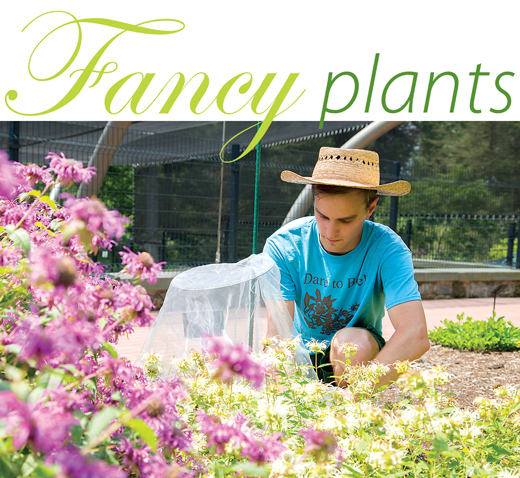
OUR UD | Some plants are known for just plain looking good. These are the beauty queens of the horticultural world, the dahlias and orchids and lilies, turning their pretty faces toward the sun as if they’re aching to be adored.
Other plants are more highly regarded for their ability to do good—to sustain the species that rely on them and to improve the environment they inhabit. Not always as showy, and sometimes even a little awkward and drab, they tend to be ignored despite their inner charm by home gardeners intent on creating an enviable landscape.
The elusive horticultural holy grail in this equation has been the plant that looks good and does good—after all, a plant with noble qualities does little good if no one wants to plant it.
So for the past year and a half, the Mount Cuba Center—a plant research center in Delaware well-regarded for its studies of native plants and their role in a healthy local ecosystem—and its research partners at the College of Agriculture and Natural Resources (CANR) have been busy searching for varieties of native plants that will charm the customer, but also benefit the ecology.
As part of the search, they are taking cues from the true judges of a plant’s beneficial nature—the bees, butterflies and other insects who gather (or not) on the flowers and leaves of the plants that gardeners cultivate. Through funding from Mount Cuba, the researchers have set up beehives at Mount Cuba and on CANR’s property in Newark and have been collecting and testing pollen from the insects as a way of determining which plants are favored, and which pollens and nectars have the greatest nutritional value to the insects.
The UD partnership, in which Mount Cuba and UD researchers hope to make “eco-friendly” a selling point of certain cultivars, is rare in the world of horticultural product development. It also aligns nicely with the shifting preferences of today’s gardeners, who increasingly favor plants marketed as having the “best nectar for butterflies,” or the “best pollen for bees.”
“In the past, gardeners and landscape experts tended to treat plants like decorations and ignore their ecological roles,” says Doug Tallamy, the professor in UD’s Department of Entomology & Wildlife Ecology who is helping lead the current studies, along with fellow professor Deborah Delaney. “Their priority was beauty for beauty’s sake, and insects weren’t too welcome in the garden.”
But hopefully this will change.
“We want people to realize that you don’t have to have an ugly garden to enjoy nature,” Eileen Boyle, Mt. Cuba’s director for education and research says. “Native plants are beautiful.”




